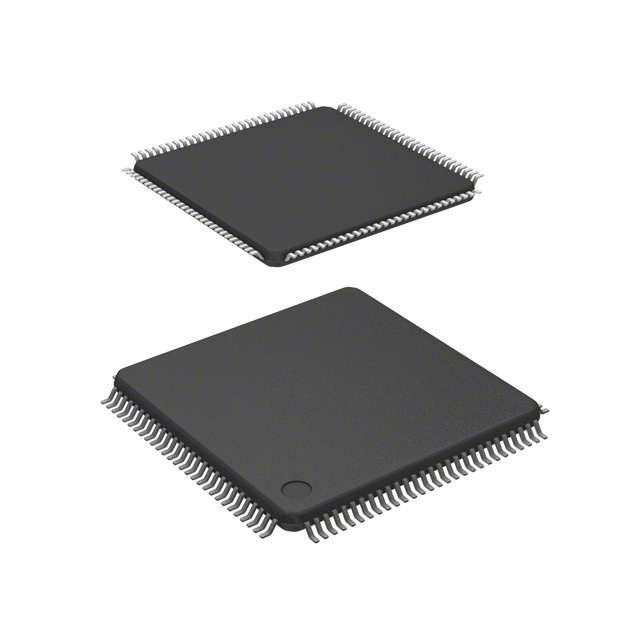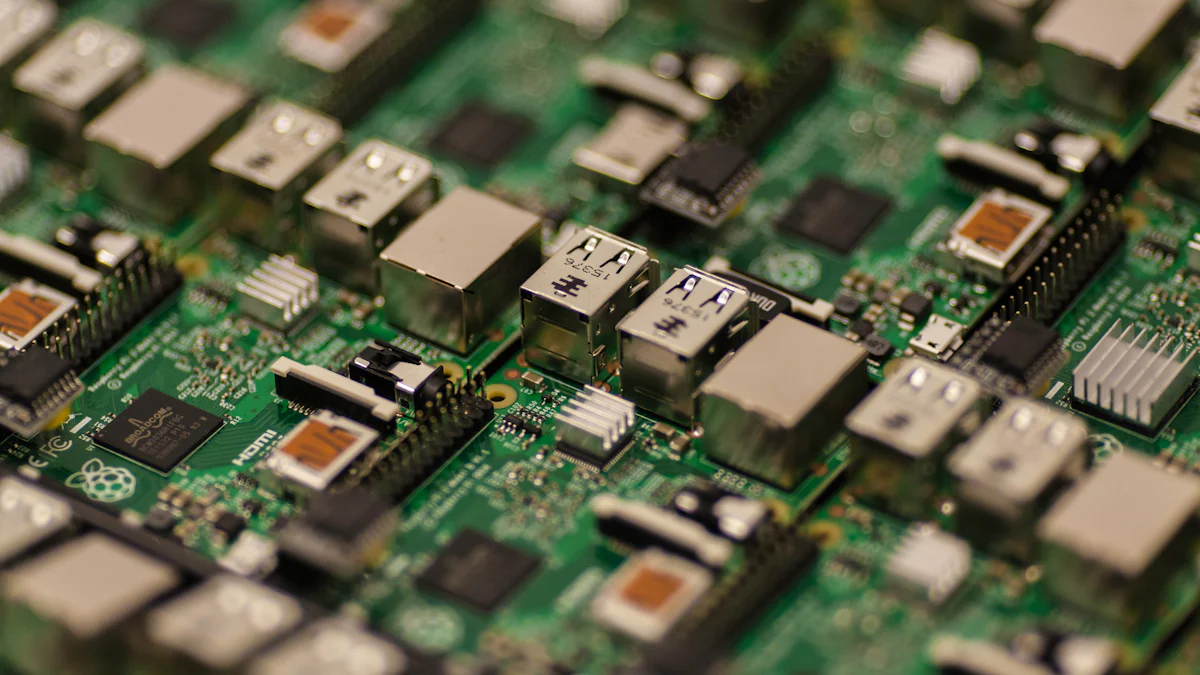Programming Essentials for MC9S12XD256 Microcontrollers

The MC9S12XD256C and MC9S12XD256M microcontrollers, developed by NXP, are pivotal in contemporary technology. They serve as the backbone for control modules and engine management systems in the automotive industry. These microcontrollers' versatility extends to industrial applications, where they enhance efficiency and reliability. Their robust architecture supports various functionalities, making them indispensable in complex systems. The MC9S12XD256 offers a comprehensive solution for developers seeking to innovate in fields requiring precise control and integration.
Understanding the MC9S12XD256 Architecture

16-bit Design
Benefits of 16-bit architecture
The MC9S12XD256 microcontroller features a 16-bit architecture, which offers several advantages. This design allows for efficient data processing and memory usage. Developers benefit from faster computation speeds, which enhance the performance of applications. The 16-bit architecture also supports a wider range of operations, making it suitable for complex tasks in automotive and industrial systems.
Comparison with other architectures
When compared to 8-bit architectures, the 16-bit design of the MC9S12XD256 provides superior processing power and memory capacity. This enables the execution of more sophisticated algorithms and control processes. In contrast to 32-bit architectures, the 16-bit design strikes a balance between performance and cost, making it an ideal choice for applications where resource efficiency is crucial.
Peripheral Support
Types of peripherals supported
The MC9S12XD256 microcontroller supports a variety of peripherals, enhancing its versatility. These include timers, analog-to-digital converters (ADCs), and pulse-width modulation (PWM) modules. Such peripherals enable precise control and monitoring of system parameters, which is essential in automotive and industrial applications.
Integration with automotive systems
In automotive systems, the integration of peripherals plays a critical role. The MC9S12XD256 microcontroller seamlessly interfaces with sensors and actuators, facilitating real-time data processing and control. This capability ensures optimal performance and reliability in engine management and other automotive control systems.
Communication Interfaces
Overview of communication protocols
The MC9S12XD256 microcontroller supports multiple communication interfaces, including the Serial Communication Interface (SCI) and the Serial Peripheral Interface (SPI). These protocols enable efficient data exchange between the microcontroller and other components within a system. The availability of diverse communication options enhances the microcontroller's adaptability to various applications.
Application in system integration
In system integration, communication interfaces are vital for ensuring seamless interaction between different components. The MC9S12XD256 microcontroller's support for SCI and SPI facilitates the integration of complex systems, such as those found in automotive and industrial environments. This capability allows developers to design systems that are both efficient and reliable, meeting the demands of modern technology.
Tools and Environments for Programming
CodeWarrior Development Studio
Features and capabilities
CodeWarrior Development Studio offers a comprehensive environment for programming the MC9S12XD256C and MC9S12XD256M microcontrollers. Developers find a range of tools that simplify coding, debugging, and testing. The studio supports various programming languages, enhancing flexibility. Its intuitive interface allows users to navigate complex projects with ease. CodeWarrior also integrates seamlessly with BDM (Background Debug Mode) tools, providing efficient debugging capabilities.
Setting up the development environment
Setting up CodeWarrior Development Studio involves several straightforward steps. First, users download and install the software from the NXP website. Next, they configure the environment to match the specific requirements of the MC9S12XD256C or MC9S12XD256M. This setup includes selecting the appropriate compiler and linking with BDM tools. Once configured, developers can begin coding for control modules and engine management systems, leveraging the studio's powerful features.
ETL Programmer
Role in coding and debugging
The ETL Programmer plays a crucial role in coding and debugging for the MC9S12XD256C and MC9S12XD256M. It provides a reliable interface for uploading code to the microcontroller. Developers use it to identify and fix errors efficiently. The ETL Programmer supports BDM, allowing real-time interaction with the microcontroller during the debugging process.
Advantages in programming
Using the ETL Programmer offers several advantages. It ensures accurate code transfer to the microcontroller, reducing the risk of errors. The programmer's compatibility with BDM enhances debugging efficiency. Developers working on control modules and engine management systems benefit from its robust performance and reliability.
USBDM Emulator
In-circuit programming
The USBDM Emulator facilitates in-circuit programming for the MC9S12XD256C and MC9S12XD256M. This capability allows developers to program the microcontroller without removing it from the circuit. The emulator supports BDM, enabling seamless updates and modifications. In-circuit programming proves essential for maintaining control modules and engine management systems.
Debugging techniques
Debugging with the USBDM Emulator involves several effective techniques. Developers utilize BDM to monitor and adjust the microcontroller's operations in real-time. This approach helps identify issues quickly and implement solutions efficiently. The emulator's compatibility with CodeWarrior Development Studio enhances its utility, making it a valuable tool for programming the MC9S12XD256C and MC9S12XD256M.
Programming Model of MC9S12XD256

Registers
Types of registers
The MC9S12XD256 microcontroller features several types of registers essential for efficient programming. These include general-purpose registers, control registers, and status registers. Each type plays a specific role in managing data and executing instructions. General-purpose registers store temporary data, while control registers configure the microcontroller's operations. Status registers provide feedback on the current state of the system.
Usage in programming
Registers form the backbone of the programming process. Developers use them to manipulate data and control the flow of instructions. For instance, the XCLKS pin helps in selecting the clock source, which is crucial for timing operations. Proper utilization of registers ensures optimal performance and reliability in applications like automotive systems. Understanding the connections between registers and other components is vital for effective programming.
Instruction Sets
Overview of instruction sets
The MC9S12XD256 boasts a robust instruction set designed for efficient data processing. This set includes arithmetic, logic, and control instructions. Each instruction performs a specific task, such as adding numbers or comparing values. The microcontroller's 16-bit design enhances the execution of these instructions, making it suitable for complex tasks.
Examples of common instructions
Common instructions include load, store, and branch operations. These instructions allow developers to move data between registers and memory, perform calculations, and control the flow of the program. For example, the load instruction transfers data from memory to a register, while the branch instruction alters the sequence of execution based on specific conditions. Mastery of these instructions is crucial for developing efficient control algorithms.
Control Algorithms
Designing control algorithms
Designing control algorithms involves creating a sequence of instructions that achieve a desired outcome. Developers must consider factors like timing, resource allocation, and system constraints. The Pierce oscillator and its connections play a significant role in timing control, ensuring precise operation. A well-designed algorithm enhances system performance and reliability.
Implementation in automotive systems
In automotive systems, control algorithms manage functions like engine performance and safety features. The MC9S12XD256 microcontroller's ability to handle complex algorithms makes it ideal for these applications. Developers must carefully plan the schematic of the system, considering each pin and its role. For instance, the Swing Pierce Oscillator Connections ensure stable frequency generation, which is critical for engine management.
Practical Tips for Effective Programming
Utilizing Datasheets
Importance of datasheets
Datasheets serve as a crucial resource for developers working with the MC9S12XD256 microcontroller. They provide detailed specifications and characteristics of the microcontroller, including pin configurations, electrical properties, and operational guidelines. By consulting datasheets, developers gain insights into the microcontroller's capabilities and limitations. This knowledge helps in designing systems that maximize performance and reliability.
How to interpret datasheet information
Interpreting datasheet information requires attention to detail. Developers should focus on key sections such as electrical characteristics, which outline voltage and current requirements. Understanding timing diagrams is essential for synchronizing operations within the system. Pin configuration tables help in connecting the microcontroller to other components accurately. By mastering these sections, developers can ensure that their designs adhere to the microcontroller's specifications.
User Manuals
Key sections to focus on
User manuals complement datasheets by providing practical guidance on using the MC9S12XD256 microcontroller. Developers should pay attention to sections detailing initialization procedures and configuration settings. These sections offer step-by-step instructions for setting up the microcontroller for specific applications. Additionally, the troubleshooting section provides solutions to common issues, aiding in efficient problem-solving.
Application in troubleshooting
In troubleshooting, user manuals become invaluable. They offer diagnostic procedures for identifying and resolving issues. Developers can refer to error codes and suggested remedies to address malfunctions. By following the manual's guidance, developers can quickly restore system functionality, minimizing downtime and ensuring smooth operation.
System Integration
Best practices for integration
Successful system integration involves several best practices. Developers should ensure compatibility between the MC9S12XD256 microcontroller and other system components. This includes verifying communication protocols and electrical interfaces. Proper documentation of the integration process aids in future maintenance and upgrades. Testing the integrated system under various conditions ensures reliability and performance.
Common challenges and solutions
System integration presents challenges such as signal interference and timing mismatches. Developers can mitigate these issues by using shielding techniques and precise timing controls. Ensuring proper grounding and isolation reduces noise and enhances signal integrity. By addressing these challenges proactively, developers can achieve seamless integration and optimal system performance.
Resources and Further Reading
Recommended Books and Articles
Books for beginners
For those new to programming the MC9S12XD256 microcontroller, several books provide a solid foundation. "Embedded Systems: Introduction to the Freescale Controller" offers a comprehensive introduction to the Freescale architecture. This book serves as an excellent Bookmark for beginners, guiding them through basic concepts and practical applications. Another valuable resource is "Microcontroller Programming: The Beginner's Guide," which simplifies complex topics into digestible content. These books help readers understand the fundamentals and prepare them for more advanced studies.
Advanced reading materials
Advanced learners can delve into specialized texts that explore intricate aspects of the MC9S12XD256. "Advanced Microcontroller Programming and Interfacing" provides in-depth coverage of control algorithms and system integration. This book is a must-read for those looking to master the Freescale controller's capabilities. Additionally, "Real-Time Embedded Systems" discusses the implementation of real-time applications, offering insights into optimizing performance and reliability. These materials serve as a Bookmark for experienced developers seeking to enhance their skills.
Online Forums and Communities
Engaging with the community
Online forums and communities offer invaluable support for developers working with the MC9S12XD256. Platforms like the Freescale Community Forum allow users to engage with peers and experts. Members can Reply to queries, share experiences, and provide Kudos for helpful contributions. These interactions foster a collaborative environment where knowledge is freely exchanged. Developers can Bookmark discussions on specific topics, ensuring they have quick access to relevant information.
Finding support and advice
Forums also serve as a hub for finding support and advice. Users can Subscribe to RSS Feed updates, keeping them informed about the latest discussions and developments. The community often addresses common challenges, providing solutions and best practices. Members can Report Inappropriate Content, ensuring a respectful and productive atmosphere. By participating in these forums, developers gain access to a wealth of knowledge and resources, enhancing their understanding of the MC9S12XD256.
In summary, mastering the programming essentials for the MC9S12XD256 microcontroller empowers developers to create efficient and reliable systems. This microcontroller's architecture, tools, and programming model offer a robust foundation for innovation in automotive and industrial applications. Developers should explore further resources to deepen their understanding and enhance their skills. Engaging with online communities and reading recommended materials can provide valuable insights. For additional information or assistance, readers are encouraged to reach out and connect with experts in the field.
See Also
Best Methods for Incorporating MC9S12XET512VAG
Investigating MC9S12DJ256MFUE Specs in Automotive Use
Uncovering Key Specs of MC9S12XEQ512CAL
CALL US DIRECTLY
(+86)755-82724686
RM2508,BlockA,JiaheHuaqiangBuilding,ShenNanMiddleRd,Futian District,Shenzhen,518031,CN
www.keepboomingtech.com sales@keepboomingtech.com
